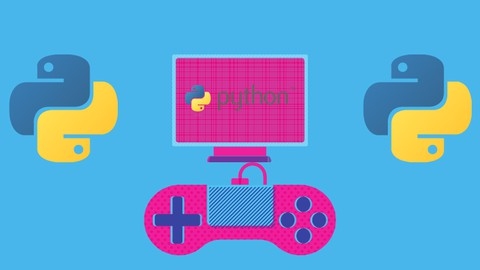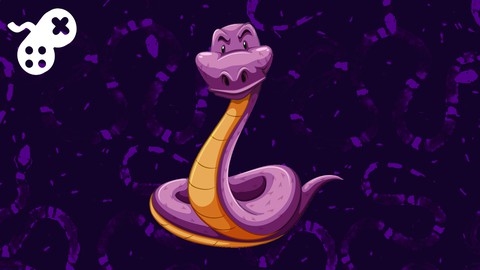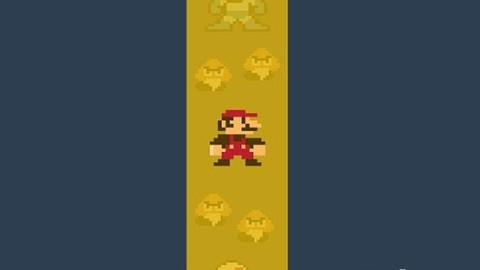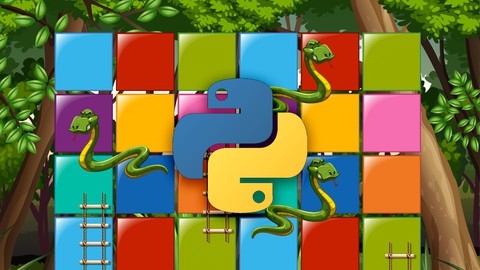Python is a versatile language that’s well-suited for game development due to its ease of use, vast libraries, and thriving community.
Learning Python game development can open doors to creating interactive experiences, from simple arcade games to complex simulations.
You’ll gain valuable programming skills and learn to think creatively, designing and building your own virtual worlds.
Finding the right Python game development course on Udemy can be a challenge, with countless options available.
You’re searching for a program that goes beyond basic concepts, offering hands-on projects and real-world examples to solidify your understanding.
You want to feel confident in your ability to build engaging and polished games.
Based on our extensive research, The Art of Doing: Video Game Creation With Python and Pygame stands out as the best overall course on Udemy.
This comprehensive program covers everything from setting up your development environment to building complex games using the popular Pygame library.
You’ll learn essential game development concepts like collision detection, animation, and user input, creating a solid foundation for your future projects.
This is just the beginning of our exploration into the world of Python game development.
We’ve compiled a list of other excellent courses tailored to different skill levels and interests.
Keep reading to discover the perfect course for your journey and start creating your own amazing games!
The Art of Doing: Video Game Creation With Python and Pygame
This comprehensive course provides a solid foundation in game development using Python and the Pygame library.
You’ll start with the essentials, setting up your development environment and diving into the fundamentals of Pygame, such as creating display surfaces, drawing elements, and incorporating sound.
The real strength of this course lies in its hands-on approach.
You’ll build a series of engaging games, starting with simple titles like “Feed the Dragon” and “Catch the Clown” to get you comfortable with the basics.
These early projects allow you to progressively build upon your skills, leading you into more complex games like “Snake” and “Burger Dog” where you’ll delve into game mechanics like collision detection and movement restrictions.
As you progress, you’ll delve into advanced programming concepts like object-oriented programming, sprites, and sprite groups.
Games like “Monster Wrangler” and “Space Invaders” provide excellent examples of how to structure your code using classes and inheritance for efficient game development.
The highlight of the course is the “Zombie Knight” project.
This challenging platformer allows you to apply your skills in creating tile maps, incorporating gravity and animation, and implementing collision masks.
You’ll get a real sense of building a complete game, incorporating various elements you’ve learned throughout the course.
Beyond game development, you’ll also learn how to create executable applications of your games, making it easy to share your creations with others.
This course offers a well-structured path to learn Pygame and build your own unique and engaging video games.
Make 10 Advanced Pro Games in Python
You’ll start with the basics of setting up Python and an Integrated Development Environment (IDE), followed by a hands-on project creating a Dino game.
This initial project provides a practical foundation for understanding game mechanics and coding in Python.
The course then delves into more advanced topics, covering a range of game genres.
You’ll build a car racing game, explore classic arcade titles like Pong and Snake, and even tackle more challenging projects like Flappy Bird and a helicopter game.
The syllabus provides a solid structure, guiding you through the development process for each game.
One of the course’s strengths lies in its thorough approach to Python and Pygame.
You’ll receive a detailed crash course on Python fundamentals, including loops, variables, functions, and other essential concepts.
The course also covers Pygame’s features extensively, enabling you to understand how to create graphics, sound effects, and control gameplay.
However, while the course covers a wide variety of games, it might benefit from providing more in-depth tutorials for each project.
For example, you’ll find introductory explanations for each game, but additional guidance on advanced techniques and optimization could enhance the learning experience.
The comprehensive coverage of game genres, alongside the detailed Python and Pygame lessons, provides a strong foundation for building your game development skills.
However, incorporating more advanced tutorials for each game project would further enhance the course’s depth and value.
Exploring Game Mechanics with Python by Example
You’ll start by setting up your environment with Python and Pycharm, the tools you’ll use throughout your learning journey.
The course then dives deep into the fundamentals of game development, covering concepts like the main game loop, sprites, and basic input handling.
You’ll quickly transition from theory to practice by building real games, starting with a classic “Breakin’ Bricks” project.
This early experience will solidify your understanding of core mechanics and prepare you for more complex game builds.
You’ll then tackle “Tetris,” a game that introduces essential concepts like block shapes, rotation, and collision detection.
Building “Asteroids” takes your skills further, adding features like screen wrapping, sound effects, and even asteroid splitting.
These projects are not just fun exercises, but valuable learning tools that reinforce your understanding of game design principles.
The final project, “Space Invaders,” challenges you to implement more advanced features like scene switching, character animation, and projectile mechanics.
This project truly allows you to demonstrate your mastery of the concepts you’ve learned throughout the course.
This course covers a wide range of topics, but the structured progression and hands-on projects ensure you build a solid foundation in game development.
Python Game Development using Pygame and Python 3
This course offers a practical and engaging introduction to game development using Python and Pygame.
You’ll be guided through the fundamentals, starting with setting up your environment and creating your first game window.
The curriculum then progresses systematically, covering essential concepts like graphics, input controls, movement, collision detection, and sound effects.
You’ll build your skills incrementally as you create a space invaders-style game.
This hands-on approach allows you to see the concepts come to life as you code each feature.
While the course focuses on the basics, it provides a strong foundation for further exploration in game development.
The ‘game over’ functionality, which you’ll implement towards the end, demonstrates a key aspect of game design: managing game states.
You’ll learn how to handle player defeat and present appropriate feedback to the user.
It’s well-structured, practical, and engaging, making it a good choice for beginners looking to create their first video game.
Create snake with Python PyGame
This course will guide you through the process of building a classic Snake game from scratch, equipping you with the skills and knowledge to create your own interactive experiences.
You’ll start by setting up a game window using PyGame, the popular Python library for game development.
Then, you’ll learn how to load images and handle keyboard input, bringing your game to life with user interaction.
The course will teach you how to create the snake itself, defining its movement and behavior, and implement game play rules to create a challenging and engaging experience.
You’ll also learn to refine your code with refactoring techniques, ensuring your game is efficient and well-structured.
And to add a professional touch, you’ll learn how to incorporate custom fonts, giving your game a polished look and feel.
This is a great starting point for aspiring game developers who are eager to learn the fundamentals of building interactive games with Python.
Python Game Development - Create a Flappy Bird Clone
This course offers a comprehensive and hands-on approach to building your own Flappy Bird game using Python.
You’ll start by setting up your development environment and diving into the basics of PyGame, a popular library for game development.
One of the strengths of this course is its detailed explanation of game logic.
You’ll learn how to implement collision detection, create a scoring system, and even adjust difficulty levels, which will make your game more engaging for players.
The course also emphasizes visual design and customization.
You’ll discover how to add different colors, backgrounds, and obstacles to create a unique and personalized game experience.
Throughout the course, you’ll be guided through the process of building a fully functional Flappy Bird game, from the initial concept to the final product.
While the syllabus is quite detailed, consider exploring the bonus material for additional techniques and insights that will further enhance your game design skills.
This course is a great starting point for anyone interested in learning how to create their own games with Python.
Code a cricket game: Learn Python programming through sports
This course takes a unique approach to teaching Python by using the familiar world of cricket as a framework.
You’ll learn essential programming concepts like variables, loops, and conditional statements while simulating different aspects of a cricket match.
The course starts with the basics, guiding you through setting up your Python environment and introducing you to fundamental programming elements through clear and engaging cricket analogies.
As you progress, you’ll encounter more advanced concepts like lists and dictionaries, which you’ll use to build your own cricket team and keep track of scores.
The “Changing Ends” section is particularly noteworthy.
Here, you’ll delve into the world of while loops and booleans, essential for controlling the flow of your game.
This course is well-suited for those who want to learn Python in a fun and engaging way.
It provides a solid foundation in core programming concepts while offering a unique and relatable learning experience.
If you’re a fan of cricket or simply looking for a creative way to learn Python, this course is worth considering.
Intro to Python: Learn while developing a pac-man game
This course is a fun and engaging way to learn Python by building a classic Pac-Man game from scratch.
You’ll dive right into the action, starting with the fundamentals of Python, including variables, control flow, and functions.
You’ll get hands-on experience with creating a game map, locating Pac-Man, and making him move.
Along the way, you’ll learn to test your code and implement basic user input.
As the course progresses, you’ll face more challenging tasks like implementing collision detection to prevent illegal moves, determining victory conditions, and even animating the ghosts.
This hands-on approach is ideal for visual learners who enjoy seeing the results of their code.
You’ll also learn to create a main loop to manage the game’s flow and explore ways to improve the user interface by adding features.
The course concludes with a fascinating showcase of different Pac-Man game implementations, including object-oriented programming.
This final section allows you to see how the same game can be structured differently, expanding your understanding of Python’s versatility.
If you’re looking for a fun and practical way to learn Python, this course is definitely worth considering.








